Iulia-Alexandra Lungu
NullHop: A Flexible Convolutional Neural Network Accelerator Based on Sparse Representations of Feature Maps
Mar 06, 2018
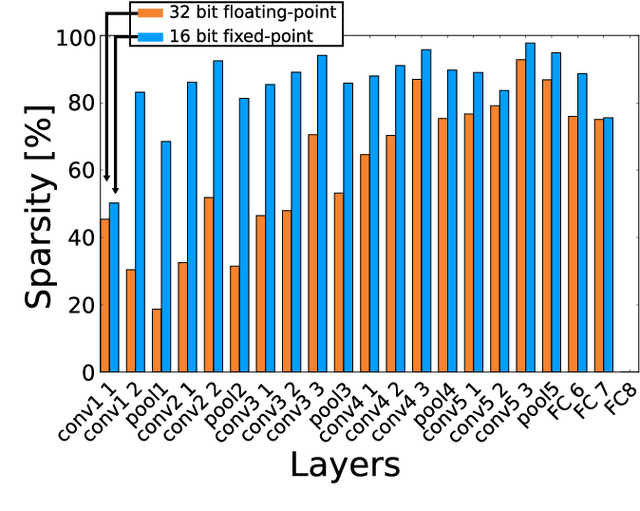
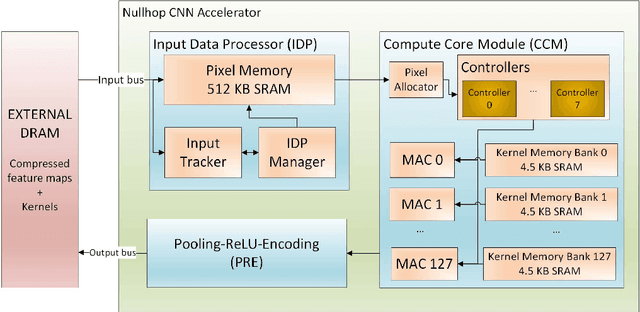
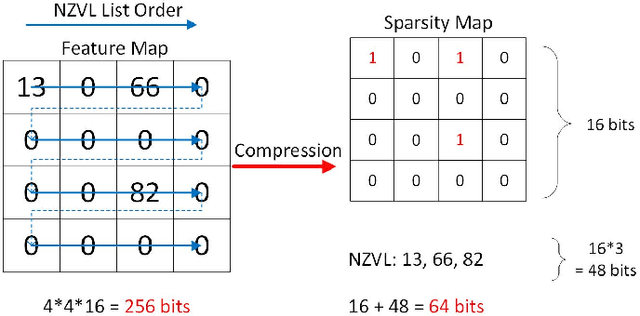
Abstract:Convolutional neural networks (CNNs) have become the dominant neural network architecture for solving many state-of-the-art (SOA) visual processing tasks. Even though Graphical Processing Units (GPUs) are most often used in training and deploying CNNs, their power efficiency is less than 10 GOp/s/W for single-frame runtime inference. We propose a flexible and efficient CNN accelerator architecture called NullHop that implements SOA CNNs useful for low-power and low-latency application scenarios. NullHop exploits the sparsity of neuron activations in CNNs to accelerate the computation and reduce memory requirements. The flexible architecture allows high utilization of available computing resources across kernel sizes ranging from 1x1 to 7x7. NullHop can process up to 128 input and 128 output feature maps per layer in a single pass. We implemented the proposed architecture on a Xilinx Zynq FPGA platform and present results showing how our implementation reduces external memory transfers and compute time in five different CNNs ranging from small ones up to the widely known large VGG16 and VGG19 CNNs. Post-synthesis simulations using Mentor Modelsim in a 28nm process with a clock frequency of 500 MHz show that the VGG19 network achieves over 450 GOp/s. By exploiting sparsity, NullHop achieves an efficiency of 368%, maintains over 98% utilization of the MAC units, and achieves a power efficiency of over 3TOp/s/W in a core area of 6.3mm$^2$. As further proof of NullHop's usability, we interfaced its FPGA implementation with a neuromorphic event camera for real time interactive demonstrations.
Theory and Tools for the Conversion of Analog to Spiking Convolutional Neural Networks
Dec 13, 2016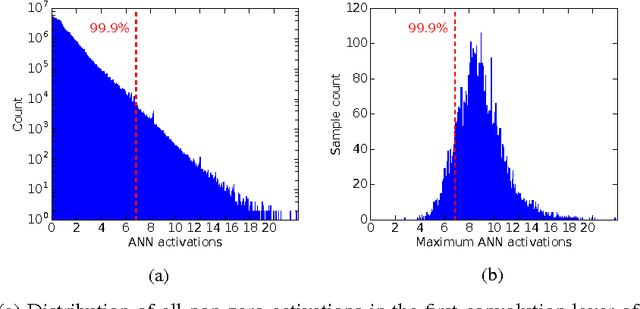
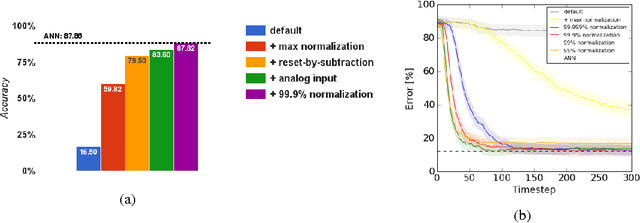
Abstract:Deep convolutional neural networks (CNNs) have shown great potential for numerous real-world machine learning applications, but performing inference in large CNNs in real-time remains a challenge. We have previously demonstrated that traditional CNNs can be converted into deep spiking neural networks (SNNs), which exhibit similar accuracy while reducing both latency and computational load as a consequence of their data-driven, event-based style of computing. Here we provide a novel theory that explains why this conversion is successful, and derive from it several new tools to convert a larger and more powerful class of deep networks into SNNs. We identify the main sources of approximation errors in previous conversion methods, and propose simple mechanisms to fix these issues. Furthermore, we develop spiking implementations of common CNN operations such as max-pooling, softmax, and batch-normalization, which allow almost loss-less conversion of arbitrary CNN architectures into the spiking domain. Empirical evaluation of different network architectures on the MNIST and CIFAR10 benchmarks leads to the best SNN results reported to date.
 Add to Chrome
Add to Chrome Add to Firefox
Add to Firefox Add to Edge
Add to Edge